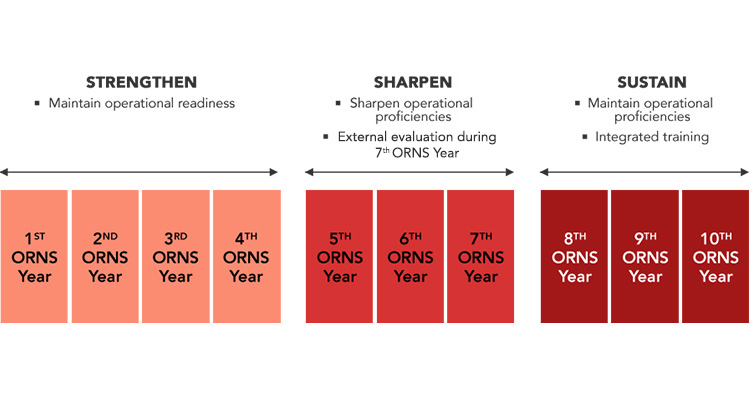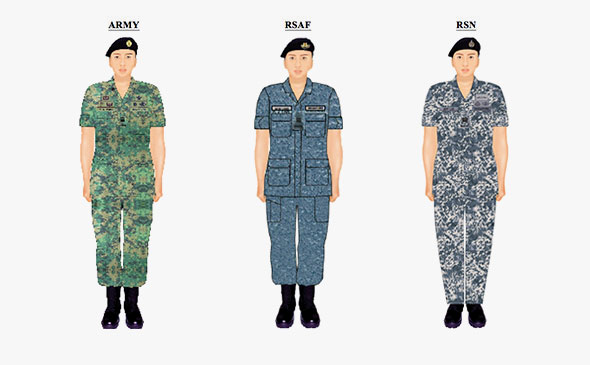Writing in a forum asking for advice, the NSman said even his boots are ‘cui’ (cannot make it) already

Writing in Hardware Zone an Operationally Ready National Serviceman expressed his anxiety at being called back for reservist. Asking the forumers for advice, the NSman said that he was being called back for service after many many years and that all his ORD mates have ROD MR already.
National Serviceman (NSman), after reaching their Operationally Ready Date (ORD), will transition from full-time National Serviceman (NSF) to NSman, where they will be required to serve up to 40 days of Operationally Ready National Service (ORNS) per year for the duration of their ORNS training cycle till the age of 50 years (for officers) or 40 years (for other ranks). During their ORNS journey, the NSman goes through a NS training phase with his NS unit which is typically a 10-year training cycle which comprises 3 main phases.
ROD as an acronym for Run Out Date which is the time supposed to mean the end of National Service obligations between the NSman and the Ministry of Defence (MINDEF). MR refers to the MINDEF Reserve stage that the NSman will be phased into after completing their ORNS. In the MR phase they will not have to take their Individual Physical Proficiency Test (IPPT), or be called up for ORNS activities.
The forumer who got the call-up from MINDEF said that he does not even know which unit he will be posted to. He just knows where to report to for the call-up. He said the “SAF 100 only mentioned to report with Army No.4, nothing else”. “Does it mean I literally only need to go in and report in No.4 and that’s it? No FBO helmet e.t.c?”, he asked.
‘SAF 100’ is the official notice informing NSmen of their call-up, while FBO refers to Full Battle Order. The SAF No. 4 is common, standard attire and is widely known as the ‘smart 4’. The NSman said that he was still holding on to his old camouflage uniform and gears. His boots are also damaged. He asked if he should report for duty in his old No. 4.
It seems the NSman was called up for the purpose of operation manning. He asked what operations manning entailed and why his call-up was for a period longer then 2 week.
One senior member of the forum who responded to the queries suggested that the NSman should contact the NS hotline to get his unit to contact him. Another forumer advised him to just turn up in civilian formal long sleeves clothes.
“It maybe better not to turn up in old no.4 uniform coz by “law” all must wear the new uniform. Last time can buy old army uniform at army market/beach road. I am not sure of the new pixel design uniform.”
- Advertisement -
The best advice for the NSman seemed to come from another senior member of the forum who said, “By right they should have sent a letter to you informing you of your unit and vocation before they sent you SAF100 for ICT.”
“Anyway I don’t think it is a good idea to wear old no.4 to in-pro especially when it had been phased out more than a decade. If I am not wrong they will add your emart credits before you went for ICT. Go ns.sg to check.
“As for ops manning, they should have sent you a letter on what item to pack, whether you are advanced party, main party and mobilisation centre info etc etc.
“By right if you don’t have the new uniform you are entitled to 3 sets of uniforms without using your credits. I was in this condition many years ago. I went to e-mart during my 1st ICT and they gave me a letter to go to Chevrons E-mart to get my uniforms without using any credits.”
The Singapore Armed Forces in 2012 introduced its new SAF hybrid uniform for soldiers in combat. SAF said that the new uniform dries faster and is more breathable, which lowers the likelihood of heat injuries occurring. The new uniforms are also flame-resistant as they are made out of aramid fiber – which also makes it highly lightweight and durable – not easily torn even in times of physical stress.
The SAF No. 4 has evolved over time. Since 1967, the No. 4 has been updated and changed at least 5 times. In 2020, the SAF introduced a new load bearing vest that improves heat dissipation and so give better support to NSFs.

